Without access to all the goodness of outdoor soil, your indoor plants are going to need a good houseplant fertilizer to get their nutrients. 100% natural, this organic fertilizer recipe is one of the 80+ from my herbal garden recipe book, Garden Alchemy. It will keep your houseplants happy, healthy, and blooming for stunning indoor displays.
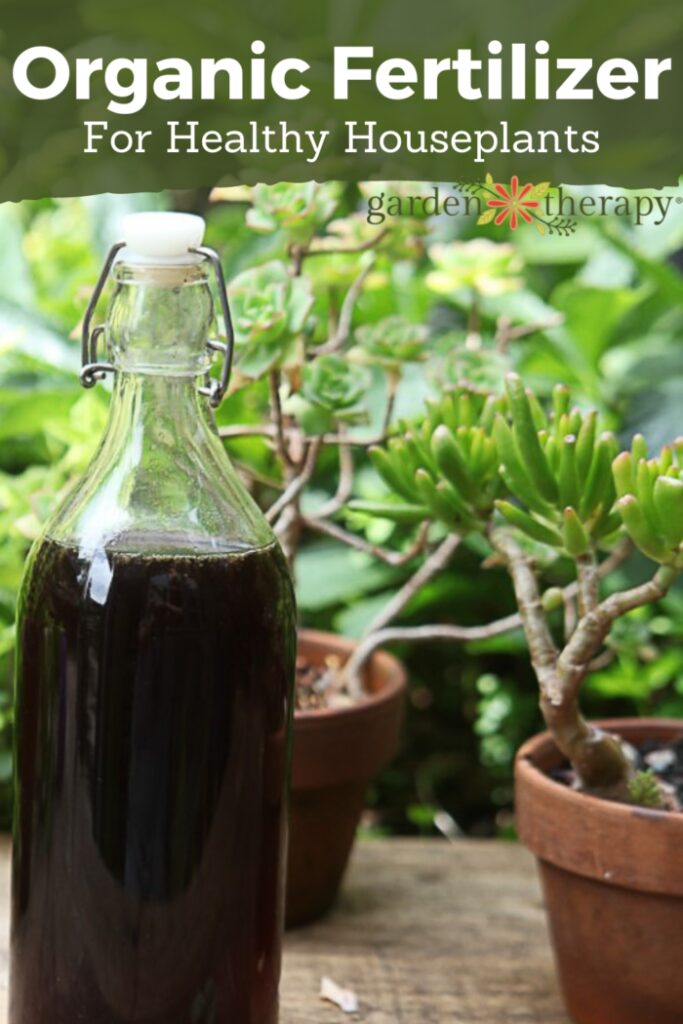
Do houseplants need fertilizer? While outdoor plants source nutrients found in the soil and their ecosystem, houseplants don’t have the same luxury. Due to the closed system of soil they live in, they are completely dependent on their human plant parents for available nutrients.
There are times when it’s easier to use a liquid fertilizer than a granular one, such as when you are watering houseplants. In the summer, houseplants respond to warmth and light, and it stimulates their growth. Applying this liquid houseplant fertilizer will ensure they are getting all the nutrients they need for this growth period.
Many home brew liquid fertilizers have microorganisms that support healthy outdoor soil but are not great for indoor soil. Specifically crafted with houseplants in mind, this DIY fertilizer will help them thrive, bloom, and grow.
There are lots of recipes in my book, Garden Alchemy, for the home gardener to apply organic methods in the home and out in the garden. Set up like a cookbook, you’ll find a ton more fertilizer recipes, as well as pest deterrents, potting mixes, and other projects and elixirs to boost your garden. This excerpt on organic fertilizer for houseplants was reprinted with permission by Cool Springs Press. Find the book in your country!
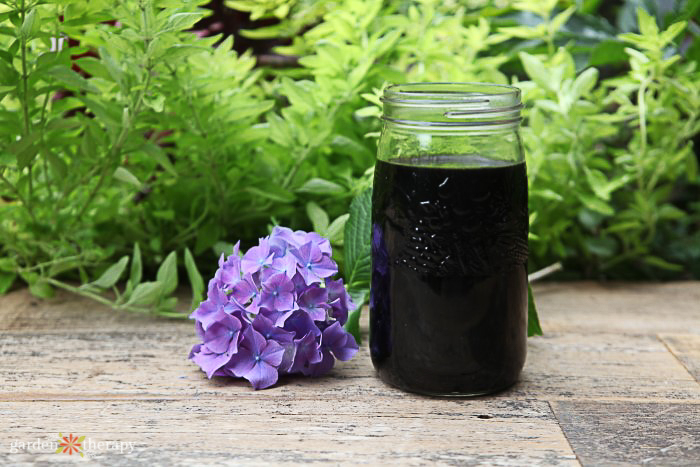
What is the Best Fertilizer for Indoor Plants?
Organic vs Synthetic
When it comes to choosing a fertilizer, first we must look at the key differences between organic and synthetic fertilizers. Organic fertilizers are derived from minerals, plants, and animal products while synthetic fertilizers are synthesized chemicals of nutrients.
Synthetic fertilizer molecules are made to be readily available to plants, and therefore can be hard to regulate. It’s easy to over apply synthetic fertilizer and cause plants to take up too much nutrition, too quickly, causing fertilizer “burn.”
Organic fertilizers are more forgiving because, often, they are not as readily available for plants. Natural organic fertilizers are broken down more slowly and therefor regulate the speed at which the nutrients are available, and encourages the plant to grow stable roots and expand the area that they collect nutrients from.
Liquid vs Granular
You can find synthetic and organic houseplant fertilizer in both liquid and granular form. Liquid fertilizer is the easiest to use as you can add it to your watering can while watering the plants. It does need to be done more frequently than granular, but you are minimizing the potential for fertilizer burn.
Granular fertilizer comes in either spikes or pellet forms. You either sprinkle or push the fertilizer into the soil and the nutrients slowly release. You can find natural and organic granular fertilizer by checking the ingredient list. If there is none, it is a synthetic fertilizer.
My houseplant fertilizer recipe is an organic liquid formula. In my opinion, this is the best fertilizer for indoor plants and the one I use most regularly. It is easy to make and use, and provides eco-friendly, natural growth enhancement.
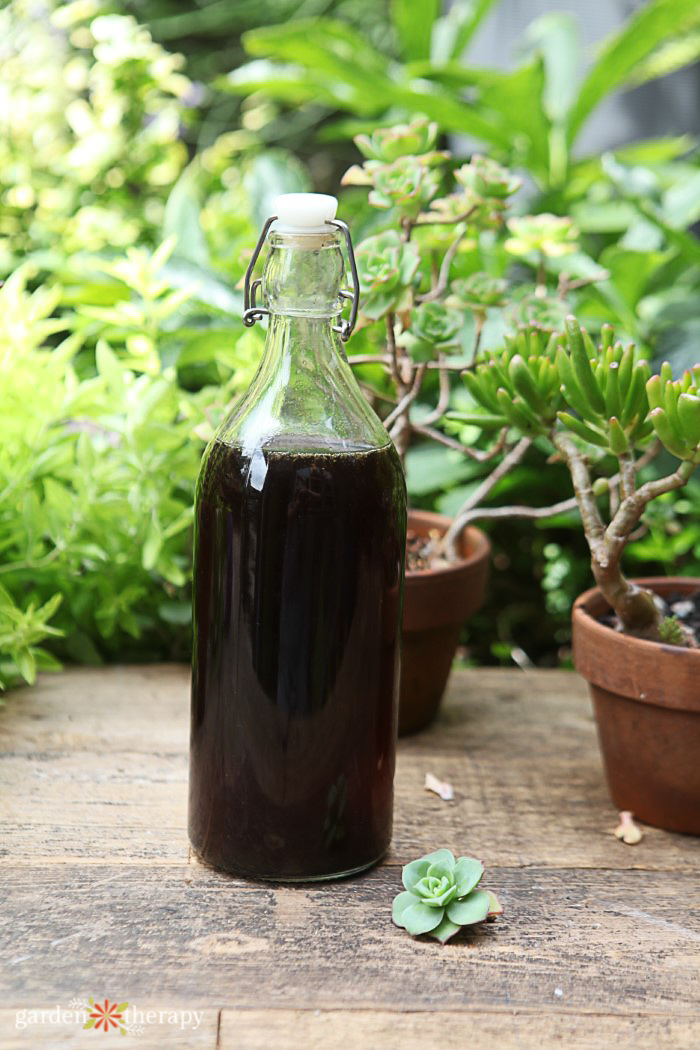
When Should I Fertilize my Indoor Plants?
Plants are good at letting you know when they need water or more sunlight, but not so good at letting you know when they need fertilizer. Stagnant growth is oftentimes the biggest indicator and is not so blaringly obvious as a wilted or yellowing leaf.
I primarily use my houseplant fertilizer during the summer. While plants have different needs, these fertilizing guidelines will apply to most houseplants. The plants may live inside, but they do most of their growing in the summer. Since we want to encourage growth, this is the best time to apply fertilizer.
Begin fertilizing in late spring or approximately 8 weeks before the last frost of the season. Start off with smaller doses of fertilizer and work your way up to full strength for the summer. I use my liquid fertilizer for my indoor plants anywhere from once a week to once a month, based on the plant.
It’s also a good practice to add a slow-release dry fertilizer at planting and again annually. I do this at the beginning of summer.
When summer comes to a close, we want to ease up on the fertilizing. Slowly stop fertilizing so that by the first frost, you are no longer adding fertilizer to your indoor plants. They will remain dormant for the winter and will not require any fertilizer.
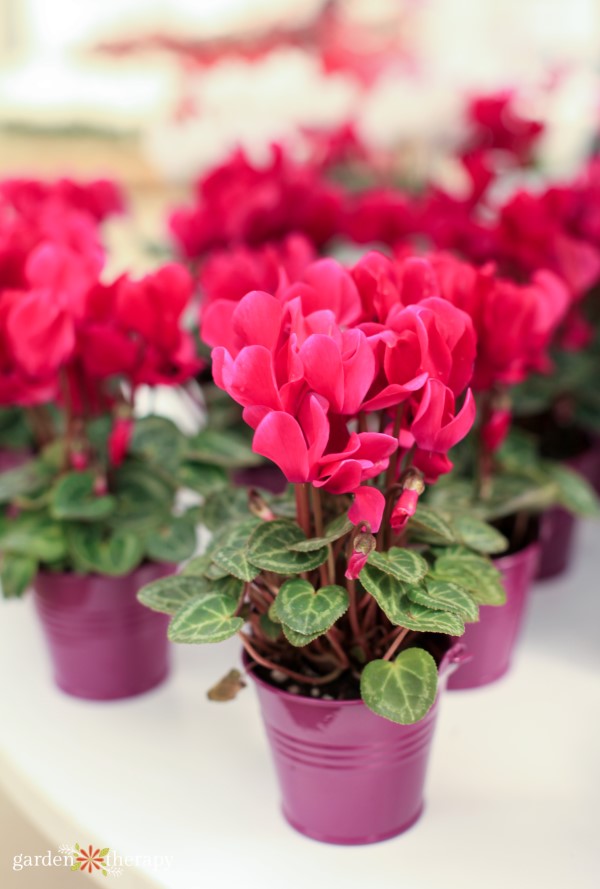
Should I Fertilize My Sick Plant?
Fertilizers are necessary for indoor plants to thrive but do not solve all plant health issues. Some well-meaning plant parents over-fertilize plants because they think the plant has a nutrient deficiency.
If you have a sick plant, there may be other reasons for their issues. Fertilizers simply enhance the nutrients, so only if your plant is lacking nutrients will it make a difference. Specific nutrient deficiencies will show up as plant health indicators such as disease, pests, dieback, and discoloration.
Plants can be sick for many reasons. If you have healthy indoor soil, like this indoor soil mix from my soil recipes, then soil fertility is not likely to be the issue. If your plant has pests, yellowing leaves from over-watering, browning leaves from too much sun, or other indicators, fertilizer will not act as miracle medicine. Make sure you know what problem your plant faces before your start fertilizing it like crazy!

How to Make Fertilizer
Like any good recipe, it’s all about sourcing quality ingredients. These are my must-haves ingredients for creating a fertilizer for indoor plants:
Alfalfa Meal
Alfalfa meal is a source of nitrogen and potassium plus a broad spectrum of other minerals, vitamins, amino acids, and the growth hormone triacontanol. It helps to improve the soil structure and helps plants access nutrients.
Blood Meal
Blood meal is a by product of cattle and hog farming that is very high in nitrogen and full of trace minerals. It comes in a dried powder form and can be included in certified organic soil mixes (although this doesn’t necessarily mean that the animal or farm was certified organic). Note: Alfalfa meal is a plant-based alternative to blood meal so if you don’t want to use it, substitute with alfalfa meal.
Rock Phosphate
Rock phosphate is a slow-release mineralized source of phosphorous for amending soil. Most home gardens have adequate amounts of phosphorous in the soil and therefore is not needed. However, it helps fertilizing plants in potting soil and encouraging flowering in plants.
Kelp Meal
Kelp meal has low levels of nitrogen and potassium, but works as a soil amendment due to its multitude of readily available trace elements and over 60 naturally chelated minerals. This seaweed extract also improves soil structure, prevents nutrients leaching, and increases soil’s water-holding capacity.
Rainwater
Tap water that comes from municipal sources is often treated with chlorine to remove and suppress microorganism growth. We want to encourage the growth of beneficial organisms as well as retain a plant’s herbal properties. If you don’t have a large enough supply of available rainwater, then allow water to sit in a wide-mouth bucket for 24 hours to allow the chlorine to evaporate or use boiled (then cooled) water.
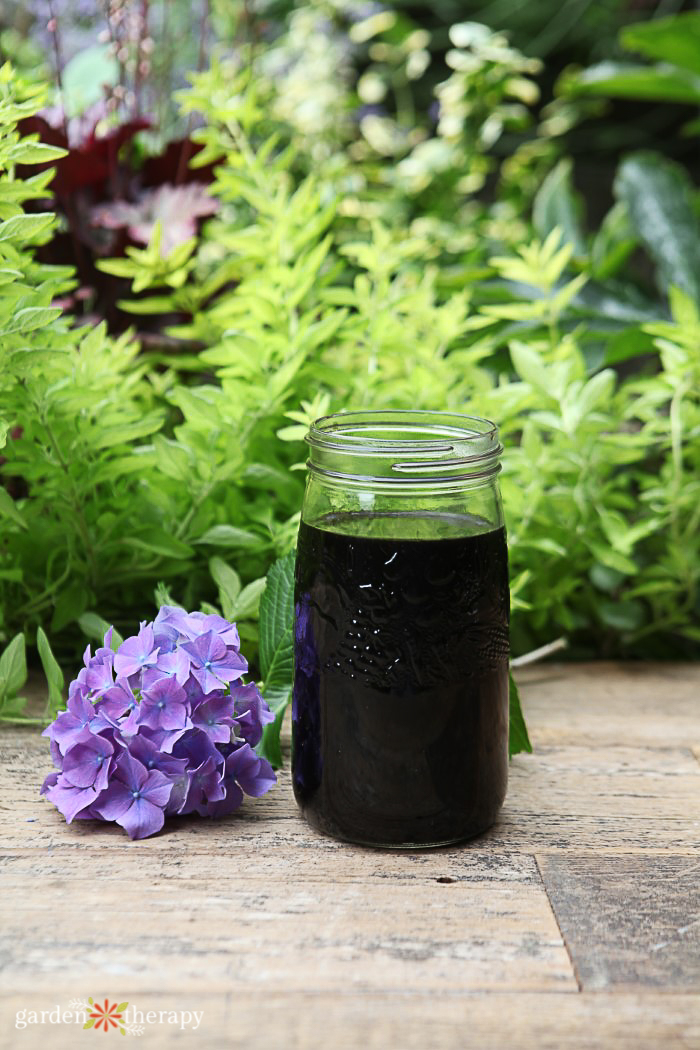
Organic Fertilizer for Indoor Plants
This DIY fertilizer only takes a few moments to make and will give you plenty of fertilizer to cover all your houseplants for a few months.
Materials
- 1 tablespoon (15 ml) soluble seaweed (kelp meal)
- 1 tablespoon (15 ml) alfalfa meal
- 1 tablespoon (15 ml) blood meal (or substitute with alfalfa meal)
- 1 tablespoon (15 ml) soft rock phosphate
- 1 gallon (3.8 L) rainwater or dechlorinated water
Make It!
- Measure the ingredients and add them to a glass bottle or jar with a lid. Stir well to combine and shake well before each use.
- Dilute the fertilizer by adding ½ cup (120 ml) of the liquid fertilizer blend into 4 cups (950 ml) of water in a watering can. Water houseplants with the diluted fertilizer mix monthly in spring and summer and discontinue use in fall and winter.
- Use the diluted fertilizer immediately. Store the prepared fertilizer in a cool, dark location for up to 3 months. Discard if the liquid shows signs of spoilage such as discoloration, mold, or an unpleasant odor.
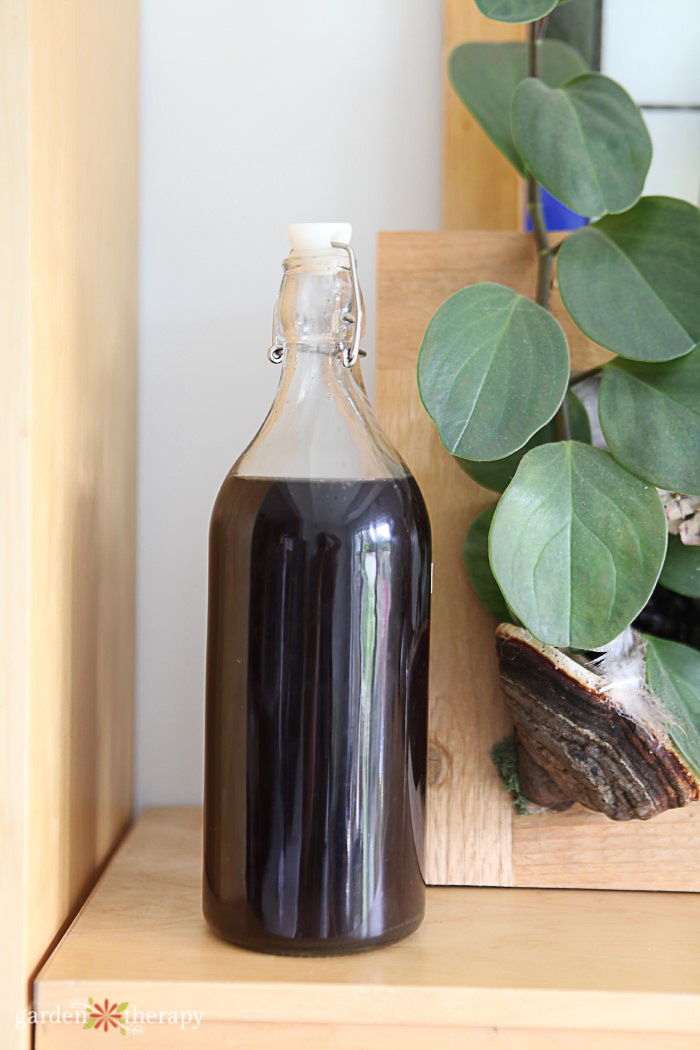
If you’re interested in learning more fertilizer recipes, such as ones for outdoor plants or granular fertilizer blends, be sure to check out my book, Garden Alchemy. With over 80 organic gardening recipes, keep your indoor and outdoor plants thriving and natural.
More Posts About Houseplants:
- How to Prevent, Identify, and Get Rid of 8 Common Houseplant Pests
- The Best Houseplants for Low Light
- Do Houseplants Really Purify the Air?
- The Most Beautiful Flowering Houseplants
Houseplant Fertilizer for Healthy Indoor Plants
Equipment
- Measuring spoons
- Airtight jar
Supplies
- 1 tbsp soluble seaweed
- 1 tbsp alfalfa meal
- 1 tbsp blood meal (or substitute with alfalfa meal)
- 1 tbsp soft rock phosphate
- 1 gal rainwater or dechlorinated water
Instructions
- Measure the ingredients and add them to a glass bottle or jar with a lid. Stir well to combine and shake well before each use.
- Dilute the fertilizer by adding ½cup (120 ml) or the liquid fertilizer blend into 4 cups (950 ml) of water in a watering can. Water houseplants with the diluted fertilizer mix monthly in spring and summer and discontinue use in fall and winter.
- Use the diluted fertilizer immediately. The prepared fertilizer can be stored in a cool, dark location for up to 3 months. Discard if the liquid shows signs of spoilage such as discoloration, mold, or an unpleasant odor.




